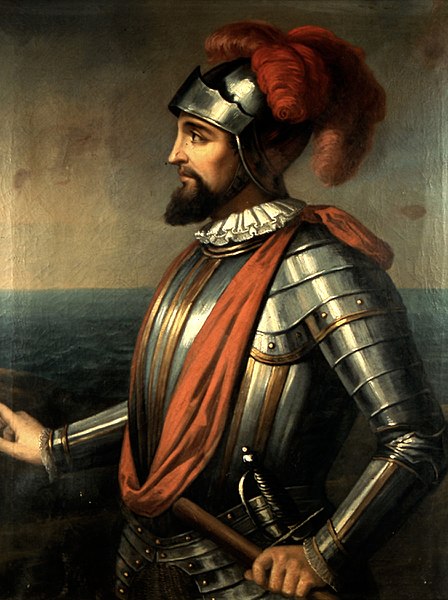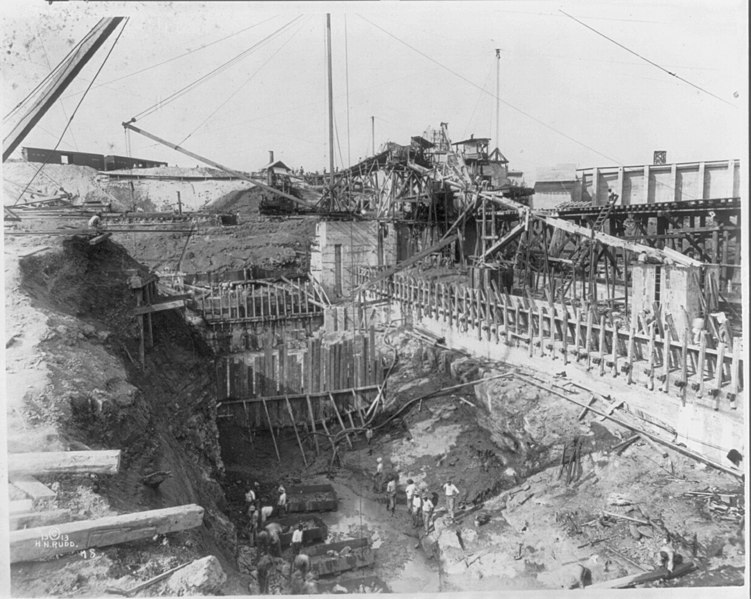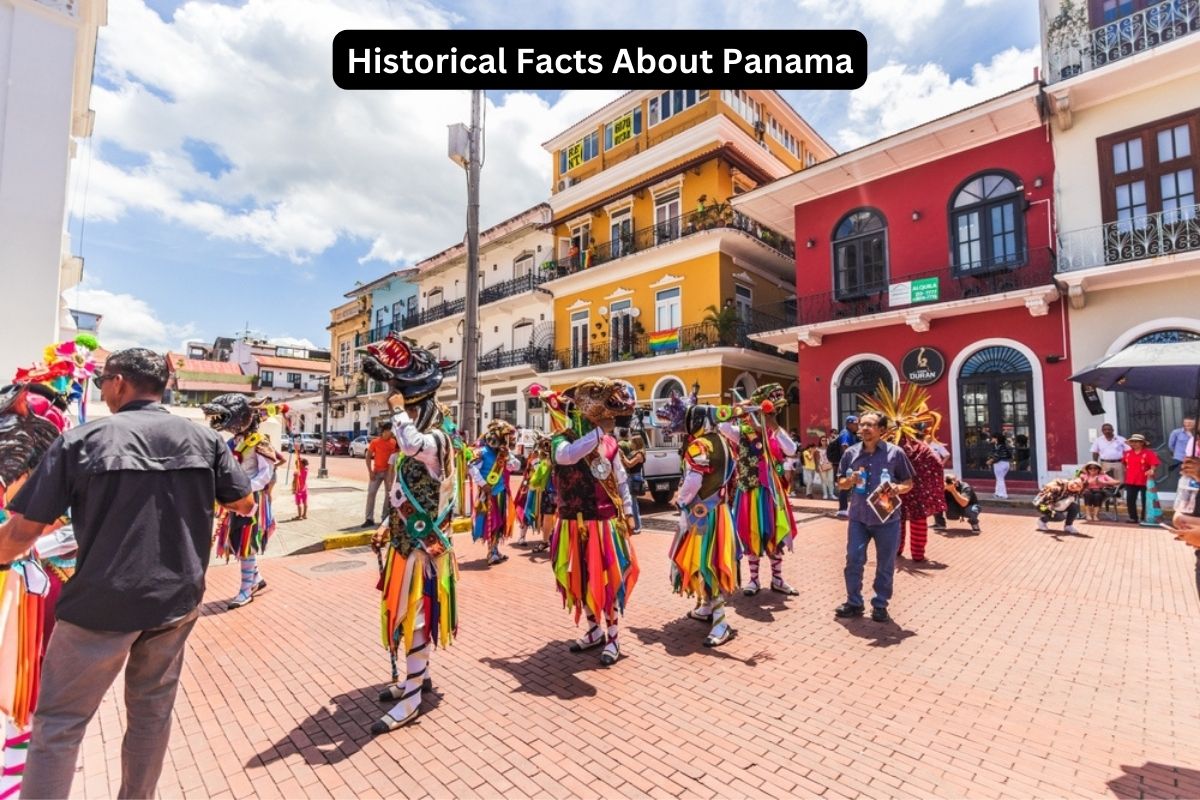Panama, located at the southernmost tip of Central America, boasts a rich history, diverse culture, and strategic significance.
From its early days as a Spanish colony to its pivotal role in global trade with the construction of the Panama Canal, this isthmus nation has played a prominent role in shaping regional and international affairs.
With its stunning biodiversity, bustling cities, and dynamic economy, Panama continues to captivate visitors and intrigue historians alike. Join us as we delve into the fascinating history and vibrant culture of Panama.
History of Panama Facts
1. Spanish colonization in the 16th century
Panama’s history of colonization began in the early 16th century when Spanish explorers, led by Rodrigo de Bastidas and later by Vasco Núñez de Balboa, arrived on its shores.
Also Read: Timeline of the History of Panama
Balboa’s expedition in 1513 marked a significant moment when he became the first European to reach the Pacific Ocean by crossing the Isthmus of Panama.
This discovery fueled Spanish interest in the region, leading to further expeditions and the establishment of settlements.

2. Panama City founded in 1519
Founded in 1519 by Spanish conquistador Pedro Arias Dávila, Panama City quickly became a key center of Spanish influence in the Americas. Its strategic location on the Pacific coast made it an important hub for trade and commerce.
The city thrived as a launching point for expeditions to Peru and other parts of South America, and it served as a base for the shipment of treasures back to Spain. Despite facing challenges such as pirate attacks and fires, Panama City continued to grow and prosper as a vital colonial outpost.
3. Panama served as a crucial transit route for Spanish treasure fleets
Panama’s narrow isthmus became a vital transit route for Spanish treasure fleets sailing between the riches of South America and Spain.
Instead of the lengthy and hazardous journey around Cape Horn, ships could unload their cargo on one coast, traverse the isthmus, and reload it onto ships waiting on the other coast.
Also Read: Facts About Drug Trafficking
This route expedited the transportation of gold, silver, and other valuable commodities, making Panama a target for pirates, buccaneers, and rival European powers seeking to intercept the treasure-laden galleons.
The riches passing through Panama played a significant role in fueling the Spanish Empire’s economy and its global dominance during the colonial era.
4. Construction of the Panama Canal (1904-1914)
The construction of the Panama Canal stands as one of the most ambitious engineering projects in history.
The idea of building a canal across the narrow isthmus of Panama to connect the Atlantic and Pacific Oceans dates back to the early 16th century. However, it wasn’t until the late 19th century that serious attempts were made to realize this vision.
The French initiated the first construction attempt in the 1880s under the leadership of Ferdinand de Lesseps, but they faced significant challenges, including tropical diseases like malaria and yellow fever, as well as engineering difficulties. The project failed, but it paved the way for the United States to take over.

In 1904, the United States began construction of the canal under the leadership of chief engineer John Stevens and later chief engineer George Washington Goethals. The construction involved digging through mountainous terrain, creating locks to lift ships over the continental divide, and creating the largest artificial lake in the world, Gatun Lake.
It was a monumental undertaking that involved the labor of thousands of workers, including many from the Caribbean islands. Despite facing similar challenges as the French, the United States successfully completed the canal, and it was officially opened on August 15, 1914, revolutionizing global maritime trade.
5. Independence from Colombia in 1903
Panama’s quest for independence from Colombia stemmed from its desire to control its own destiny, particularly concerning the construction and management of the Panama Canal. The isthmus of Panama was initially part of Colombia, known as the Department of Panama.
However, tensions arose between Panama and Colombia over the terms of the canal concession granted to the United States. Panama sought greater autonomy and a better deal for the canal, leading to a push for independence.
With the support of the United States, which sought to secure its interests in the canal project, Panama declared independence from Colombia on November 3, 1903. This move ultimately paved the way for the construction and American control of the Panama Canal.
6. United States’ influence via the Hay-Bunau-Varilla Treaty
The United States played a significant role in shaping Panama’s history, particularly in the early 20th century. Following Panama’s independence from Colombia, the United States quickly moved to secure its interests in the construction and control of the Panama Canal.
Under the terms of the Hay-Bunau-Varilla Treaty signed on November 18, 1903, the United States gained exclusive rights to build, operate, and control the canal zone in perpetuity.
This treaty also granted the United States significant influence over Panama’s internal affairs, including the right to intervene militarily to protect its interests in the canal zone.
The United States maintained control of the canal until it was handed over to Panama on December 31, 1999, under the Torrijos-Carter Treaties, marking a significant milestone in Panama’s history of sovereignty and self-determination.

7. Panama Canal handed over to Panama in 1999
The transfer of control of the Panama Canal from the United States to Panama marked a historic moment in Panama’s history. Negotiations for the handover began in the 1970s, culminating in the Torrijos-Carter Treaties signed in 1977 by Panamanian leader Omar Torrijos and U.S. President Jimmy Carter.
These treaties outlined the gradual transfer of control of the canal and the canal zone to Panama, with the process to be completed by December 31, 1999. The handover represented a significant milestone in Panama’s journey toward full sovereignty and control over its territory and resources.
8. Panama Canal expansion completed in 2016
The expansion of the Panama Canal, completed in 2016, represented a major milestone in the canal’s history and global maritime trade.
The expansion project, known as the Third Set of Locks Project, involved the construction of a new set of locks parallel to the existing ones, allowing larger “New Panamax” ships to transit the canal.
These larger vessels can carry up to three times the cargo of the previous maximum capacity, increasing the canal’s efficiency and capacity. The expansion has had significant implications for global trade routes, enabling larger ships to access new markets and reducing transit times and costs for maritime transportation.
9. Operation Just Cause in 1989 removed General Manuel Noriega
Operation Just Cause was a U.S.-led military intervention in Panama in December 1989, aimed at removing Panamanian leader General Manuel Noriega from power. Noriega, who had a long history of involvement in drug trafficking and human rights abuses, had become increasingly defiant of U.S. influence in Panama.
The operation involved a large-scale military invasion, with the goal of capturing Noriega and restoring democratic governance in Panama.
Despite facing international criticism for its unilateral action, the United States successfully achieved its objectives, and Noriega was eventually captured and brought to trial in the United States on drug trafficking charges.
10. Panama’s diverse population shaped by indigenous, European, African, and Asian influences
Panama’s history of colonization, migration, and trade has resulted in a rich tapestry of cultural diversity. Indigenous peoples, including the Guna, Emberá, and Ngäbe-Buglé, have inhabited the region for centuries, contributing their languages, traditions, and customs to Panama’s cultural heritage.
The arrival of Spanish colonizers, African slaves, European immigrants, and workers from Asia further enriched Panama’s cultural mosaic.
Today, Panama is known for its vibrant blend of indigenous, African, European, and Asian influences, reflected in its music, dance, cuisine, and festivals. This cultural diversity is a source of pride for Panamanians and adds to the country’s unique identity on the world stage.
